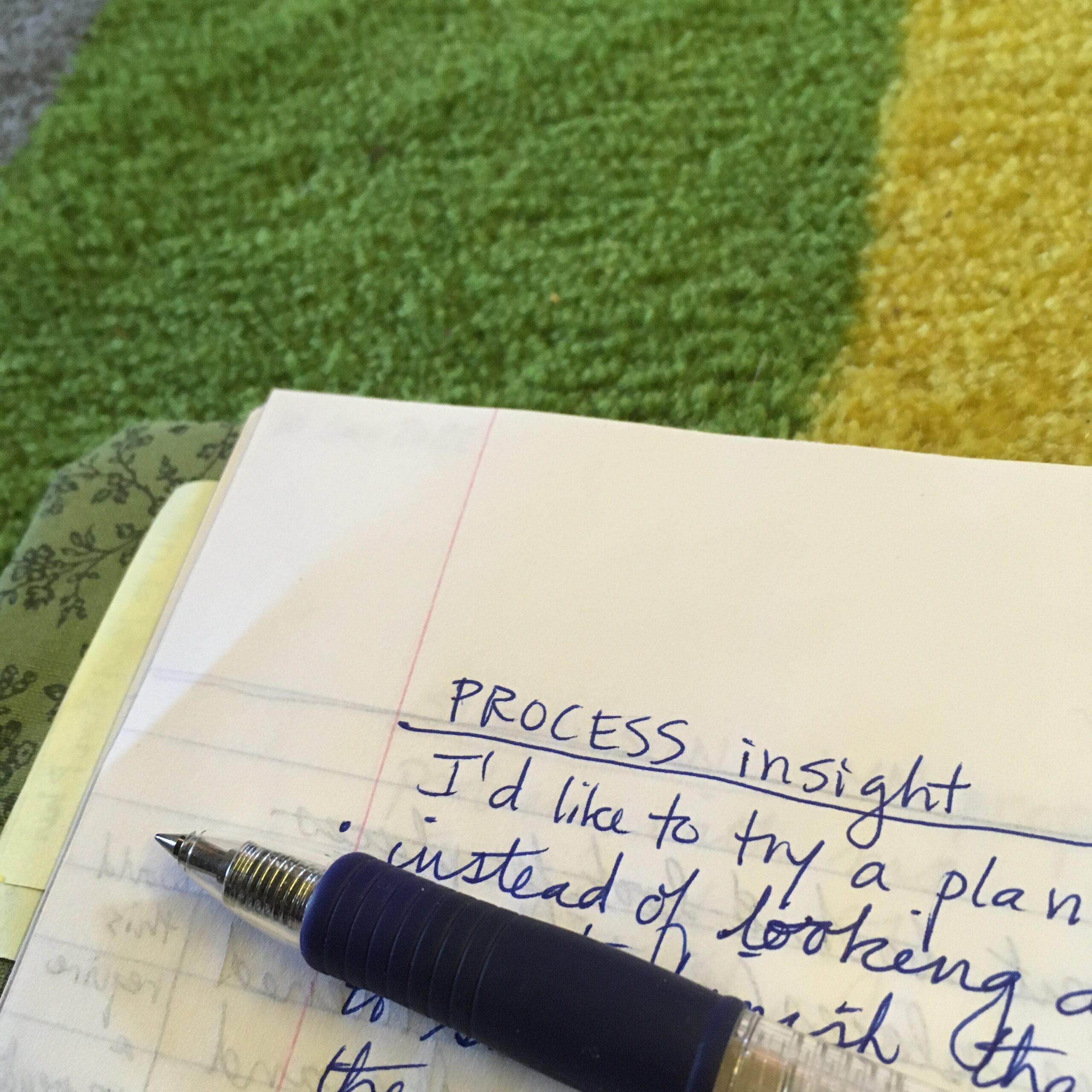Happy New Year! I’ve spent some time these past two weeks reflecting and making plans. I like to set goals. But as I looked at my writing goals this year, I discovered that I wanted to change my approach to goal setting.
I typically set a big goal first, like finishing a first draft or revising my novel. Then I break this goal down into smaller tasks. With a big goal like revising my novel, I’ve broken the process down into intermediary goals (like improving a character arc or fixing the ending). These intermediary goals get broken down again into more concrete tasks (like writing 1,000 words/day or revising three chapters/week).
Normally, when breaking a big goal down into intermediary goals I make a sequential plan of all the steps I need to get to my big goal. There’s a logic to this—first plot, then character, then pacing, for example. Having problems categorized into a logical sequence makes sense. It makes me feel like I know where I’m going.
A Kink in the Plan
I’ve discovered a problem though. Almost invariably, as I move through the steps of the plan, I end up changing it. The things I learn when I take that first step change my understanding of what needs to come next. Sometimes this is fine, as I argued in this blog post.
For the most part, I’ve taken plan shifts as a normal part of the process, and kept right on making my plans. But now I beg to differ, and there are two reasons for this.
First Reason
I waste a lot of time making long term plans, figuring out the most logical sequence to follow. I’ve always considered these lost efforts a necessary price to pay, but it would be nice not to put in time and effort that will only be thrown out later.
Second Reason
Having a sequential, logical set of goals sometimes derails me. Because I think I know where I’m going, I don’t check in with my intuition. This can lead to frustration as I try to force my process in one direction while my mind is trying to escape somewhere else. I end up wasting time on unproductive work, simply because it’s written into my plan.
New (Non-Plan) Plan
Here’s the new thing I’m trying. Instead of making a plan for how to get from here to finished, I’m going to set a goal, then figure out the first step I need to take. That’s it—just one step. Once I get through that first step, I’ll look at that distant goal again and figure out my next step. This gives me time to reflect on my goal in light of the work I’ve completed, as well as an opportunity to check in with my intuition again. Where should I go next? What makes sense now?
This concept gives me joy, which is a sign that my intuition approves—though I can’t be sure how well it’ll work until I try it.
Thinking about this evokes an image from The Lion, the Witch, and the Wardrobe: The lamppost in the woods. I see the lamppost as the goal I’m trying to reach, but there is no path to get there. Instead I have to work my way through brambles and ditches, over hills and across rivers. Each time I surmount an obstacle I need to reorient myself. My lamppost is at the heart of my woods and I am stumbling all around it.
Open to Change
This approach will give me more opportunities to adjust my goals during the process of editing. It resonates with the Writing Goals and Plans spread I set up for my bullet journal last year, which allowed me to adjust my writing goals each month. The difference this year is that instead of pencilling in the whole year in January, I’ll probably leave it blank or only pencil in major milestones.
I can imagine a future in which I know my own process so well that I can create sequential long term plans and stick to them. Or not. It may turn out that my process is inherently erratic. For now, I’m continuing to experiment. Perhaps experimenting with process is my process.
How about you? Do you ever find yourself changing your writing process?

